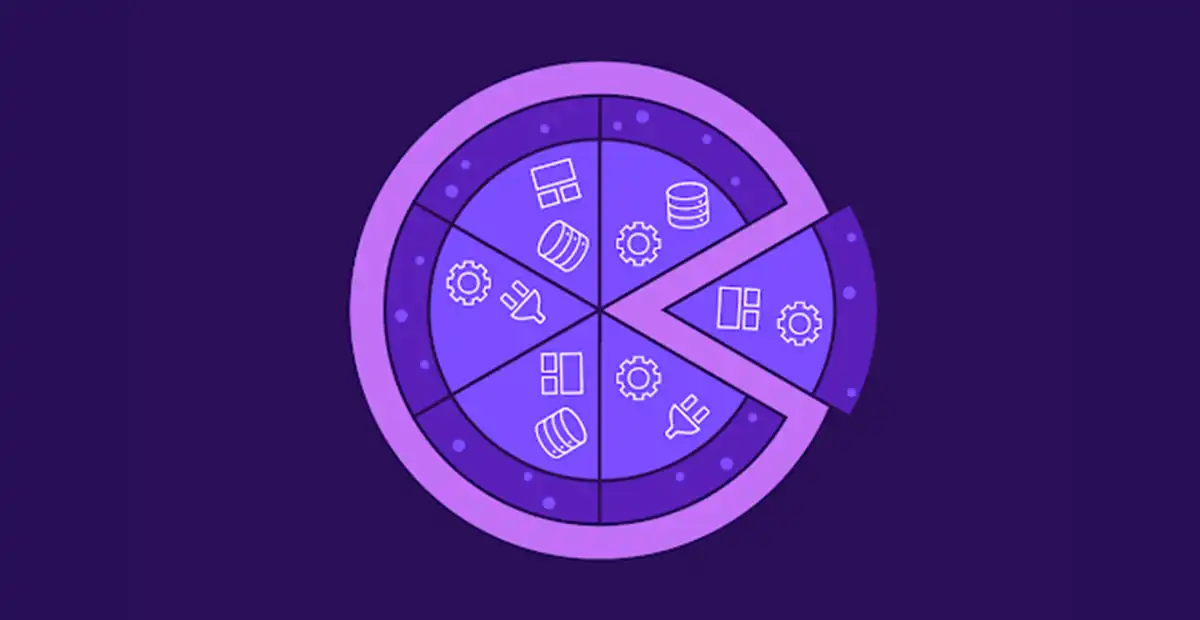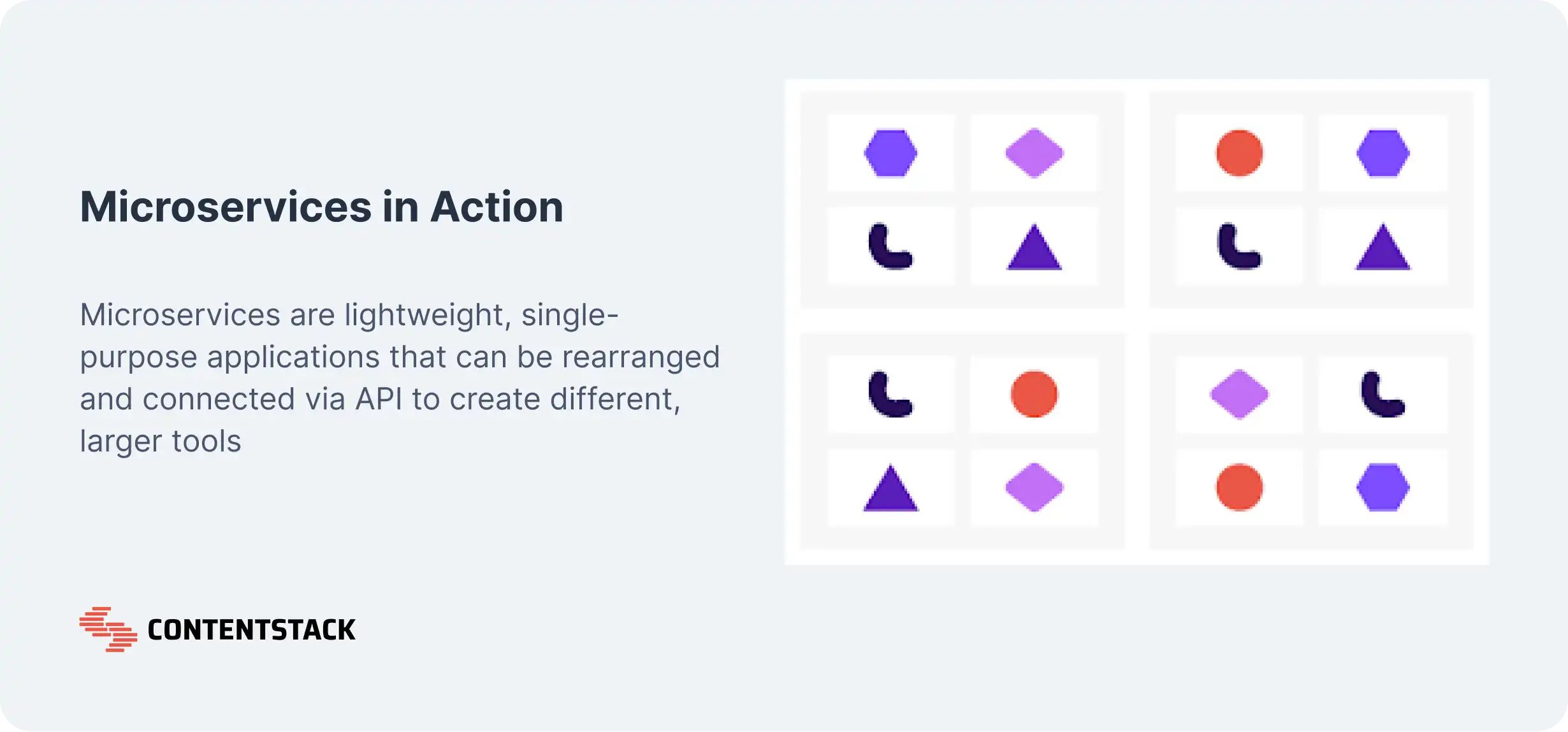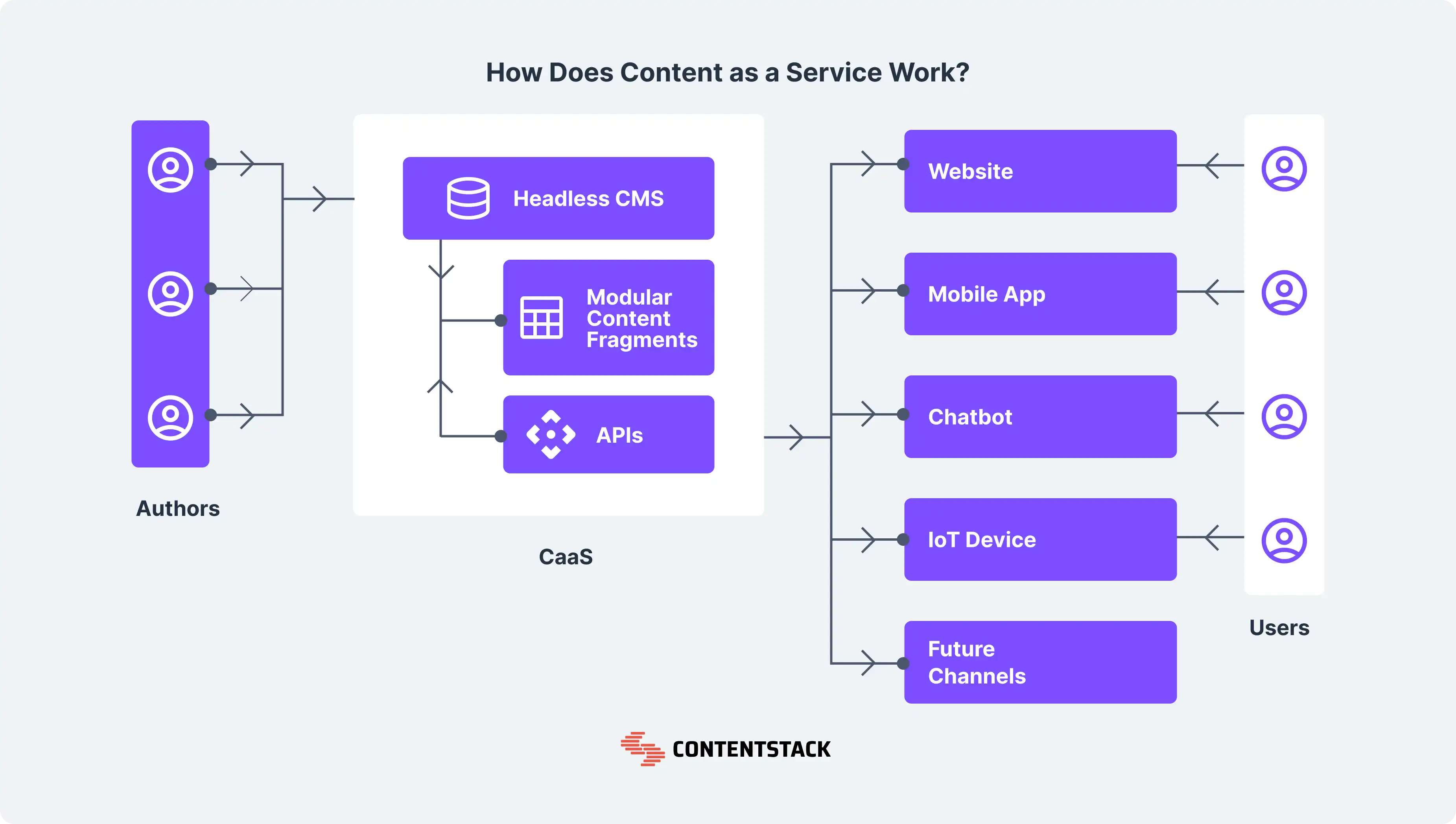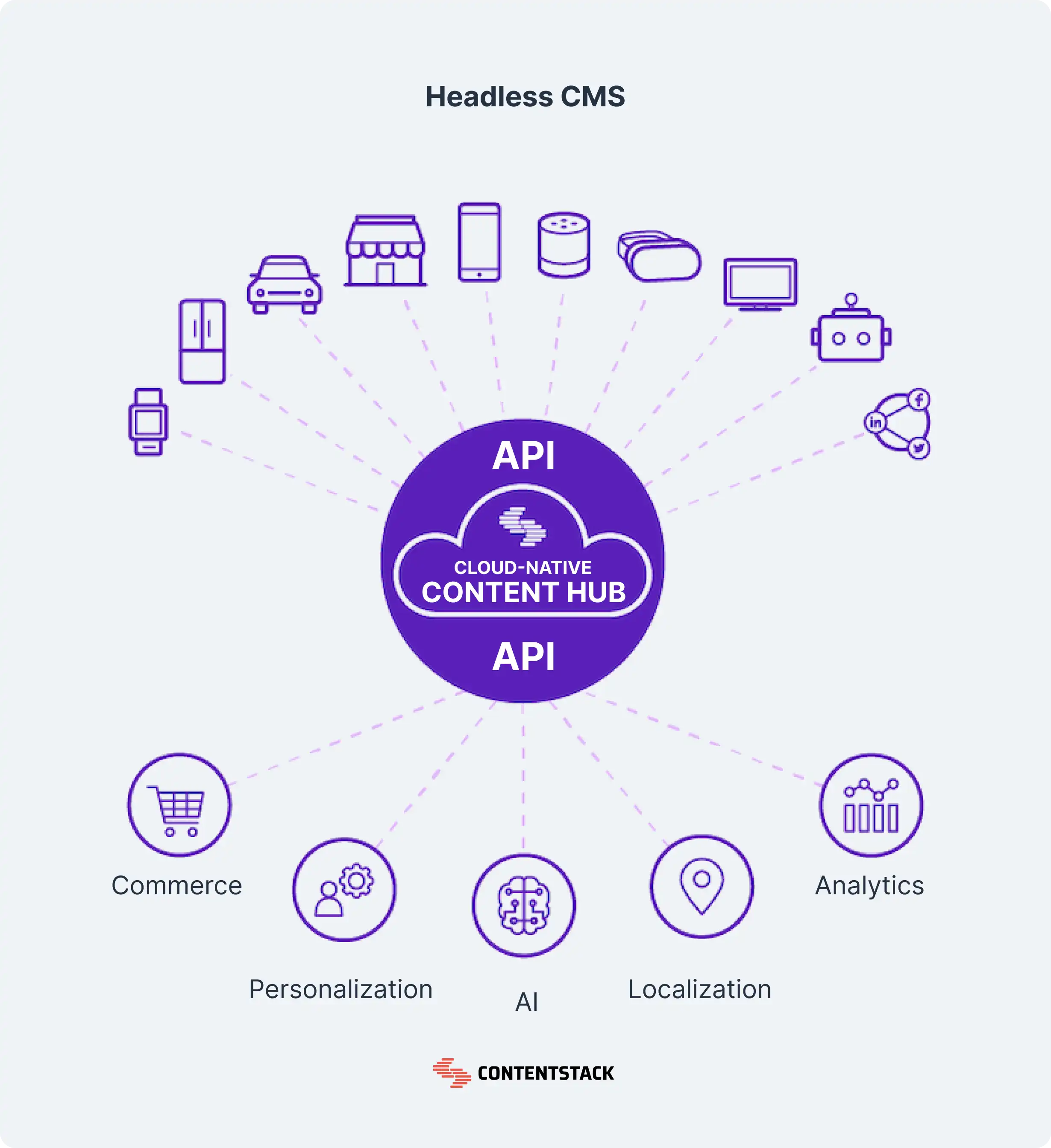Microservices technology stack: the best way to deliver Content as a Service

Experience the power of a microservices technology stack with a headless CMS. Witness seamless content delivery, customizable across channels and platforms. Empower your marketing team with an extensible, scalable solution that meets changing demands. Experience reduced business risks and quick market responsiveness. Don't wait; schedule a demo today!
Highlights
You'll learn about:
- Decoupled Functionality: A headless CMS separates front-end and back-end operations, enabling flexible content delivery across channels.
- Empower Your Teams: Equip your marketing team with a robust content management tool for greater efficiency.
- Scalable Personalization: Create personalized experiences effortlessly with scalable solutions.
- Enhanced API Capabilities: Benefit from APIs for content delivery, management, change notifications, and system extensibility.
Keep reading to learn how to incorporate a microservices technology stack with a headless CMS for optimal content delivery.
Those static website pages that were all the rage when your business entered the new millennium?
They’re no longer delivering the experience consumers crave in today’s ever-changing world.
Now, internet users are savvy and fast-moving. They expect relevant content that fuels a personalized experience no matter which channel or digital device they’re on.
Today, content is a service for the end-user to consume.
But what exactly does that mean? And how can marketing teams evolve to deliver on this new service-based content model?
That’s where a strong microservices tech stack comes in.
If we just threw a lot of new terms at you, don’t worry. We’re going to explain the nitty-gritty of microservices, content as a service and how to use both to build your own cutting-edge marketing experiences.
Modernize your digital presence with Contentstack. Learn from the success stories of Icelandair and Pella. Improve your site performance, publishing efficiency, and speed, just as they did. Start your journey towards a modern digital experience. Start your free trial with Contentstack today and witness an ROI of up to 295%.
What is a microservices technology stack?
Microservices are single-purpose applications that are “lightweight” in technology terms and communicate via application program interface (API). These micro apps are often combined and rearranged as needed to deliver on the most pertinent business goals at the moment.
And then there’s the stack.
A “stack” is a combination of languages, tools, etc., layered one on top of the other to build a digital platform or program.
When brought together, these form a microservices technology stack — a specific type of tech stack that consists of different microservices that work together using API technology.
This type of stack is highly flexible because it isn’t managed by a centralized platform, so new services can be added, removed and reorganized quickly for a modern digital experience.

The microservices technology stack benefits businesses of all sizes because it enables continuous delivery of enterprise applications as well as the flexibility startups need to change and grow their business.
The major benefits of creating a microservices technology stack
Here are some of the most important business benefits that result from adopting a microservices technology stack:
Enables continuous scaling and change
Because microservices work together via API instead of being intertwined, improvements to individual services can be developed and delivered on a continual basis.
What can continuous delivery do for you when it comes to business growth and updates?
Hopefully the same things it did for the LaserJet Firmware division at HP:
- Decreased development costs by ~40%
- Grew programs under development by ~140%
- Cut the cost per program by ~78%
Reduces business risks and failures
The flexibility of a microservices technology stack offers risk-free growth and also reduces risks in other powerful ways.
If one of the services you use experiences a catastrophic failure or is affected by a malicious actor, it doesn’t mean the death of your entire system. That single microservice can be quickly isolated and removed before your entire app or platform goes down with it.
Responds to market shifts and consumer demands at speed
In an age when new digital sales and marketing channels seem to crop up overnight, it’s invaluable for businesses to be able to respond to these changes — ideally before their competitors.
Thanks to the flexibility of a microservices technology stack, developers can quickly spin up new features that align with cutting-edge best practices and trends — without worrying about cutting all the delicate strings that hold together outdated, monolithic tech stacks.
Any limitations of working with a microservices technology stack?
As with most technical decisions, there are a few limitations you should consider before making the move to microservices.
The first is that managing a microservices technology stack can require a little more overhead than a monolithic system. With a more traditional, all-in-one tech stack, your choices are to update the whole thing at once or never update it at all. But when you employ microservices, you’ll probably find yourself spending more time on updates as you move between individual apps.
And the second limitation is a result of the first. With microservices, it’s ideal to have at least a few IT resources on staff to keep everything up to date. If your company doesn’t have the resources or otherwise have a need to employ a few IT folks, microservices might be overkill for you.
Content as a Service: what makes the microservices technology stack vital to modern marketing
Now that we’ve covered the basics of the microservices technology stack, we can dive into why this architecture is so crucial to content marketing: It enables content to be delivered as a service.
Content as a service (CaaS) is the practice of storing content in a container that websites, applications and other platforms can call (using an API), customize and display.
CaaS is a microservice and a key element of the microservices technology stack for businesses that engage in content marketing.

To successfully deliver CaaS across various customer touchpoints, your content must “live” in a centralized repository that is decoupled from any specific channel. This allows other services to call the content via API and display it on their custom front ends.
It’s time to learn about one final concept that ties it all together: Headless CMS.
Adopt headless CMS to power your microservices technology stack and deliver CaaS
A headless content management system (CMS) facilitates content management and storage like any other CMS — but what makes it special is that it also decouples front-end functionality and back-end storage.
This allows content to live in its raw form in the back end and be called, customized and delivered across channels and platforms as needed.
The structure of a headless CMS empowers developers to build the best front-end interface and use an API to call up the content the same way they would any other service.

By making CaaS achievable, headless CMS helps modern businesses deliver the unified and cutting-edge experiences consumers demand — no matter the content type, pace or channel.
Leader in content experience platforms. The Aragon Research Globe™ award recognizes how Contentstack’s low-code, easy content creation and publishing and advanced front-end hosting redefine customer experiences. Join our group demo to experience this dynamic solution.
How to choose the best headless CMS for your microservices technology stack
Now that you know why it’s so important to the microservices technology stack, let’s explore features you should look for when you’re ready to invest in a headless CMS.
A flexible, extensible framework
“Ease of integration among front-end components” was the single most important characteristic identified by digital experience professionals when it came to choosing a headless CMS, according to a 2018 Forrester report on the state of digital experience.
The decoupled architecture and API-powered connectivity native to headless CMS lends itself perfectly to creating a flexible, extensible framework in which developers can easily implement the best tech for any scenario — and retire it, as well, to keep systems clean and lightweight.
Useful content management tools
Marketing-enablement tools are where some headless CMS platforms can underperform.
This happens when CMS providers choose to remain strictly a “content repository” and ignore the importance of to creating powerful, content-powered experiences autonomously.
If you’re looking to empower your marketing team as well as your IT and business folks, we strongly recommend a headless CMS with useful content management tools that marketers can use to create and distribute high-quality experiences without bogging down IT with requests.
Scalable personalization
Personalization is the most important marketing trend of this century.
With the right headless CMS, you can integrate all the tools it takes to create a powerfully personalized experience — think data platforms, customer relationship management (CRM) tools, localization and translation software and more.
Invaluable API capabilities
When investing in something as fundamental to your business as a headless CMS, it’s essential to make sure its API can deliver on each of these capabilities:
Content delivery
This ensures you’re able to call stored content and deliver it across a variety of channels and devices.
Content management
You should seek out a headless CMS with built-in content management tools. However, developers should still look for an API with content management capabilities for when they need to edit content via the code.
Content change notifications
With your system built on a loosely coupled microservices technology stack, it’s crucial that you’re able to communicate with each service to notify them of changes to the content so they can act accordingly.
System extensibility
An API with system extensibility enables editors to access existing external content, such as in a digital asset management (DAM) platform, from inside the headless CMS.
Enterprise-ready development ecosystem
You want a headless CMS that isn’t just marketer-friendly but also makes life easier for developers with easy-to-access resources ranging from SDKs to libraries, tools, tutorials, documentation and even demo projects.
Start building your microservices technology stack now
Content and its management are at the heart of the omnichannel experience now more than ever.
That’s why it’s important you have a powerful headless CMS that empowers the use of microservices like CaaS to build and deliver content-powered experiences.
If you’re ready to make the move to a microservices technology stack, you can get started here: “Microservices: The Ultimate Guide.”
And if you need a headless CMS for your modern content architecture, you can try Contentstack’s headless, agile CMS platform for free.
About Contentstack
The Contentstack team comprises highly skilled professionals specializing in product marketing, customer acquisition and retention, and digital marketing strategy. With extensive experience holding senior positions at renowned technology companies across Fortune 500, mid-size, and start-up sectors, our team offers impactful solutions based on diverse backgrounds and extensive industry knowledge.
Contentstack is on a mission to deliver the world’s best digital experiences through a fusion of cutting-edge content management, customer data, personalization, and AI technology. Iconic brands, such as AirFrance KLM, ASICS, Burberry, Mattel, Mitsubishi, and Walmart, depend on the platform to rise above the noise in today's crowded digital markets and gain their competitive edge.
In January 2025, Contentstack proudly secured its first-ever position as a Visionary in the 2025 Gartner® Magic Quadrant™ for Digital Experience Platforms (DXP). Further solidifying its prominent standing, Contentstack was recognized as a Leader in the Forrester Research, Inc. March 2025 report, “The Forrester Wave™: Content Management Systems (CMS), Q1 2025.” Contentstack was the only pure headless provider named as a Leader in the report, which evaluated 13 top CMS providers on 19 criteria for current offering and strategy.
Follow Contentstack on LinkedIn.




.svg?format=pjpg&auto=webp)
.svg?format=pjpg&auto=webp)
.png?format=pjpg&auto=webp)






.png?format=pjpg&auto=webp)

